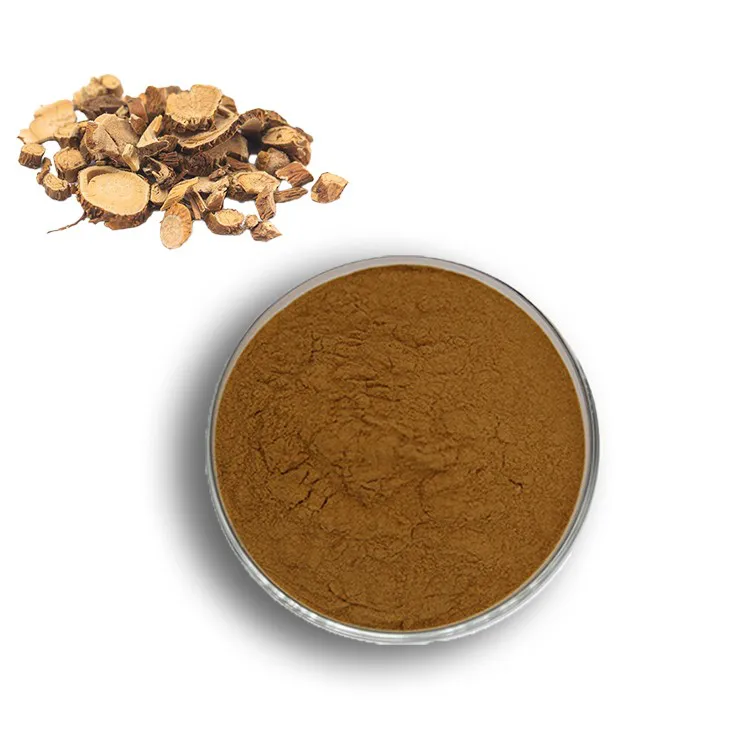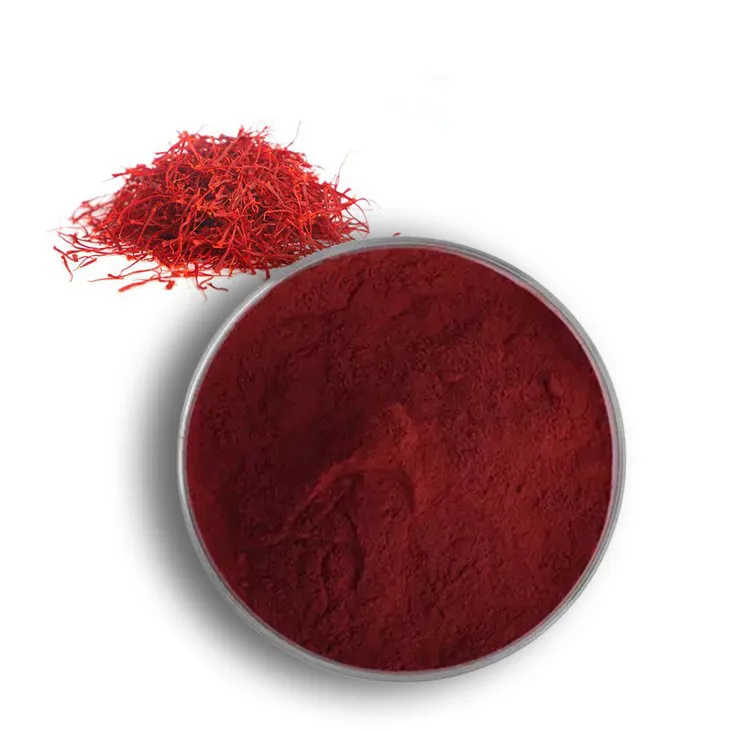- 0086-571-85302990
- sales@greenskybio.com
From Pharmaceuticals to Food: Applications of Extraction Plants Across Industries
2024-07-25
1. Introduction
Extraction plants play a vital role in numerous industries, with the pharmaceuticals and food industries being prime examples. These plants are designed to extract valuable substances from raw materials, and their applications are as diverse as the industries they serve. In this article, we will explore the various applications of extraction plants in both the pharmaceutical and food industries, as well as their significance in related sectors.
2. Applications in the Pharmaceutical Industry
2.1 Extraction of Bioactive Substances
In the pharmaceutical industry, extraction plants are crucial for obtaining bioactive substances that are used in the development of drugs. These bioactive substances can be found in various natural sources such as plants, fungi, and bacteria. For example, many plant - based drugs are derived from the extraction of alkaloids, flavonoids, and terpenoids. These compounds often possess pharmacological properties that can be used to treat a wide range of diseases.
One of the most well - known examples is the extraction of quinine from the bark of the cinchona tree. Quinine has been used for centuries to treat malaria. Another example is the extraction of paclitaxel from the bark of the Pacific yew tree. Paclitaxel is a powerful anti - cancer drug that has been used to treat various types of cancer.
2.2 Purification and Isolation
Extraction plants also play an important role in the purification and isolation of pharmaceutical compounds. After the initial extraction, the crude extract often contains a mixture of different substances. The extraction plant is then used to separate and purify the desired compound. This is typically achieved through a combination of techniques such as chromatography, distillation, and crystallization.
For instance, in the production of antibiotics, the extraction plant is used to isolate the active antibiotic compound from the fermentation broth. This involves multiple steps of extraction, purification, and concentration to obtain a pure and potent form of the antibiotic.
3. Applications in the Food Industry
3.1 Extraction of Essential Oils
The food industry extensively uses extraction plants for the extraction of essential oils. Essential oils are concentrated hydrophobic liquids that contain volatile aroma compounds. They are used for flavoring and aroma enhancement in a wide variety of food products. For example, the extraction of Peppermint Oil is used in confectionery, chewing gum, and toothpaste for its refreshing flavor.
Another common example is the extraction of lemon oil, which is used in beverages, baked goods, and desserts for its citrusy aroma. The extraction of essential oils is typically carried out using methods such as steam distillation, cold - press extraction, or solvent extraction, depending on the nature of the raw material and the desired quality of the essential oil.
3.2 Extraction of Nutrients and Health - Promoting Components
With the increasing focus on health and wellness, extraction plants are also being used in the food industry to extract nutrients and health - promoting components. For example, the extraction of omega - 3 fatty acids from fish oil has become popular due to their numerous health benefits, including reducing the risk of heart disease.
Similarly, the extraction of phytosterols from plant sources such as soybeans has been shown to have cholesterol - lowering effects. These extracted components can be added to a variety of food products such as margarine, yogurt, and breakfast cereals to enhance their nutritional value.
4. Applications in Related Sectors
4.1 Cosmetics Industry
The cosmetics industry also benefits from the use of extraction plants. Many cosmetic products contain natural ingredients that are extracted from plants. For example, the extraction of aloe vera gel is used in skincare products for its moisturizing and soothing properties. The extraction of plant - based oils such as argan oil and jojoba oil is also widely used in haircare and skincare products for their nourishing and conditioning effects.
4.2 Herbal and Nutraceutical Industry
In the herbal and nutraceutical industry, extraction plants are the backbone for the production of herbal supplements and nutraceutical products. These products are often made from the extracts of medicinal plants and are claimed to have various health benefits. For example, ginseng extract is a popular ingredient in herbal supplements for its energy - boosting and immune - enhancing properties.
The extraction process is crucial in ensuring the quality and potency of these products. It involves careful selection of raw materials, proper extraction techniques, and quality control measures to ensure that the final product contains the desired active ingredients in the appropriate amounts.
5. Significance of Extraction Plants in Different Industries
5.1 Quality and Purity
One of the main significance of extraction plants in different industries is the ability to ensure the quality and purity of the extracted substances. In the pharmaceutical industry, this is of utmost importance as even a small impurity can have a significant impact on the safety and efficacy of the drug. In the food industry, high - quality extracts are essential for maintaining the flavor, aroma, and nutritional value of the food products.
5.2 Sustainability
Extraction plants also play a role in promoting sustainability in different industries. For example, in the pharmaceutical industry, sustainable extraction practices can help protect endangered plant species by ensuring that only a limited amount of raw material is used and that proper cultivation and harvesting techniques are employed. In the food industry, sustainable extraction of essential oils and nutrients can help reduce the environmental impact of food production.
5.3 Innovation
The development of new extraction techniques and technologies in extraction plants has led to innovation in different industries. In the pharmaceutical industry, new extraction methods have enabled the discovery of novel bioactive substances and the development of more effective drugs. In the food industry, innovative extraction techniques have allowed for the extraction of new flavors and nutrients, leading to the creation of novel food products.
6. Challenges and Future Directions
6.1 Regulatory Challenges
One of the major challenges faced by extraction plants in different industries is regulatory compliance. In the pharmaceutical industry, strict regulations govern the extraction, purification, and use of pharmaceutical compounds. In the food industry, regulations regarding food additives and the safety of extracted components also need to be adhered to. These regulations can be complex and vary from country to country, posing a challenge for extraction plant operators.
6.2 Technological Advancements
There is a continuous need for technological advancements in extraction plants. In order to improve the efficiency, quality, and sustainability of extraction processes, new extraction techniques such as supercritical fluid extraction, microwave - assisted extraction, and ultrasound - assisted extraction are being explored. However, the implementation of these new techniques often requires significant investment in equipment and training.
6.3 Future Directions
In the future, extraction plants are likely to play an even more important role in different industries. With the increasing demand for natural products, there will be a greater focus on sustainable extraction practices. There will also be a continued drive for innovation in extraction techniques to meet the evolving needs of the pharmaceutical, food, and related industries.
7. Conclusion
Extraction plants are a cornerstone in the pharmaceuticals, food, and related industries. Their applications range from extracting bioactive substances for drugs in the pharmaceutical industry to extracting essential oils and health - promoting components in the food industry. They also play a significant role in related sectors such as cosmetics and herbal / nutraceutical industries. Despite the challenges they face, extraction plants are expected to continue to evolve and contribute to the growth and development of different industries in the future.
FAQ:
Q1: What are the main types of extraction plants used in the pharmaceutical industry?
There are several main types of extraction plants used in the pharmaceutical industry. For example, Soxhlet extractors are commonly used for solid - liquid extractions. They can continuously extract substances from a solid matrix with a solvent. Another type is the supercritical fluid extraction plant. Supercritical carbon dioxide is often used as the supercritical fluid in this type of plant. It has the advantage of being able to extract substances with high selectivity and leaving behind less residue compared to traditional solvents. Additionally, maceration plants are also used, where the plant material is soaked in a solvent for a long time to allow the extraction of bioactive substances.
Q2: How do extraction plants contribute to the production of healthy food components?
Extraction plants play a crucial role in obtaining healthy food components. For instance, they can be used to extract omega - 3 fatty acids from fish or flaxseed. These fatty acids are important for heart health. In the case of fruits and vegetables, extraction plants can be used to isolate antioxidants such as vitamins C and E, and polyphenols. These components are beneficial for reducing oxidative stress in the body. Also, extraction plants are used to get dietary fiber from various plant sources. Dietary fiber is essential for digestive health.
Q3: What are the challenges faced when using extraction plants in the food industry?
There are several challenges when using extraction plants in the food industry. One major challenge is maintaining the quality and safety of the extracted products. For example, the use of solvents may leave traces that need to be removed to meet food safety standards. Another challenge is the cost - effectiveness of the extraction process. Some extraction methods may be expensive, especially when dealing with large - scale production. Additionally, there is the issue of preserving the functionality of the extracted components. For example, some heat - sensitive components may lose their activity during the extraction process if not carefully controlled.
Q4: Can extraction plants be used for both small - scale and large - scale production in pharmaceuticals and food?
Yes, extraction plants can be used for both small - scale and large - scale production in both industries. In the pharmaceutical industry, small - scale extraction plants may be used in research and development laboratories to test and isolate new bioactive substances. For large - scale production, more automated and high - capacity extraction plants are used to meet the demand for drugs. In the food industry, small - scale extraction can be used in specialty food production or in the development of new food products. For large - scale production, such as in the extraction of common food additives or major healthy components for mass - produced foods, large - scale extraction plants are employed.
Q5: What is the future potential of extraction plants in these industries?
The future potential of extraction plants in these industries is significant. In the pharmaceutical industry, with the increasing demand for personalized medicine, extraction plants may be further developed to extract specific bioactive substances for targeted drug therapies more efficiently. In the food industry, as consumers become more health - conscious, extraction plants will likely be used to extract a wider range of healthy components and to develop new functional foods. There is also potential for the development of more sustainable extraction methods, such as using green solvents or reducing energy consumption during the extraction process in both industries.
Related literature
- Applications of Extraction Technologies in the Pharmaceutical Industry"
- "Extraction of Bioactive Compounds for Food and Pharmaceutical Use"
- "Modern Extraction Plants in the Food and Pharmaceutical Sectors: Trends and Innovations"
- ▶ Hesperidin
- ▶ Citrus Bioflavonoids
- ▶ Plant Extract
- ▶ lycopene
- ▶ Diosmin
- ▶ Grape seed extract
- ▶ Sea buckthorn Juice Powder
- ▶ Fruit Juice Powder
- ▶ Hops Extract
- ▶ Artichoke Extract
- ▶ Mushroom extract
- ▶ Astaxanthin
- ▶ Green Tea Extract
- ▶ Curcumin
- ▶ Horse Chestnut Extract
- ▶ Other Product
- ▶ Boswellia Serrata Extract
- ▶ Resveratrol
- ▶ Marigold Extract
- ▶ Grape Leaf Extract
- ▶ New Product
- ▶ Aminolevulinic acid
- ▶ Cranberry Extract
- ▶ Red Yeast Rice
- ▶ Red Wine Extract
-
Sophora Flavescens Root Extract
2024-07-25
-
Maitake Mushroom Extract
2024-07-25
-
Coix Seed Extract
2024-07-25
-
Saffron Extract Powder
2024-07-25
-
Bitter Melon Extract
2024-07-25
-
Reishi mushroom extract
2024-07-25
-
Resveratrol extract
2024-07-25
-
Diosmin
2024-07-25
-
Cocoa Extract
2024-07-25
-
Uridine-5'-monophosphate Disodium salt
2024-07-25





















